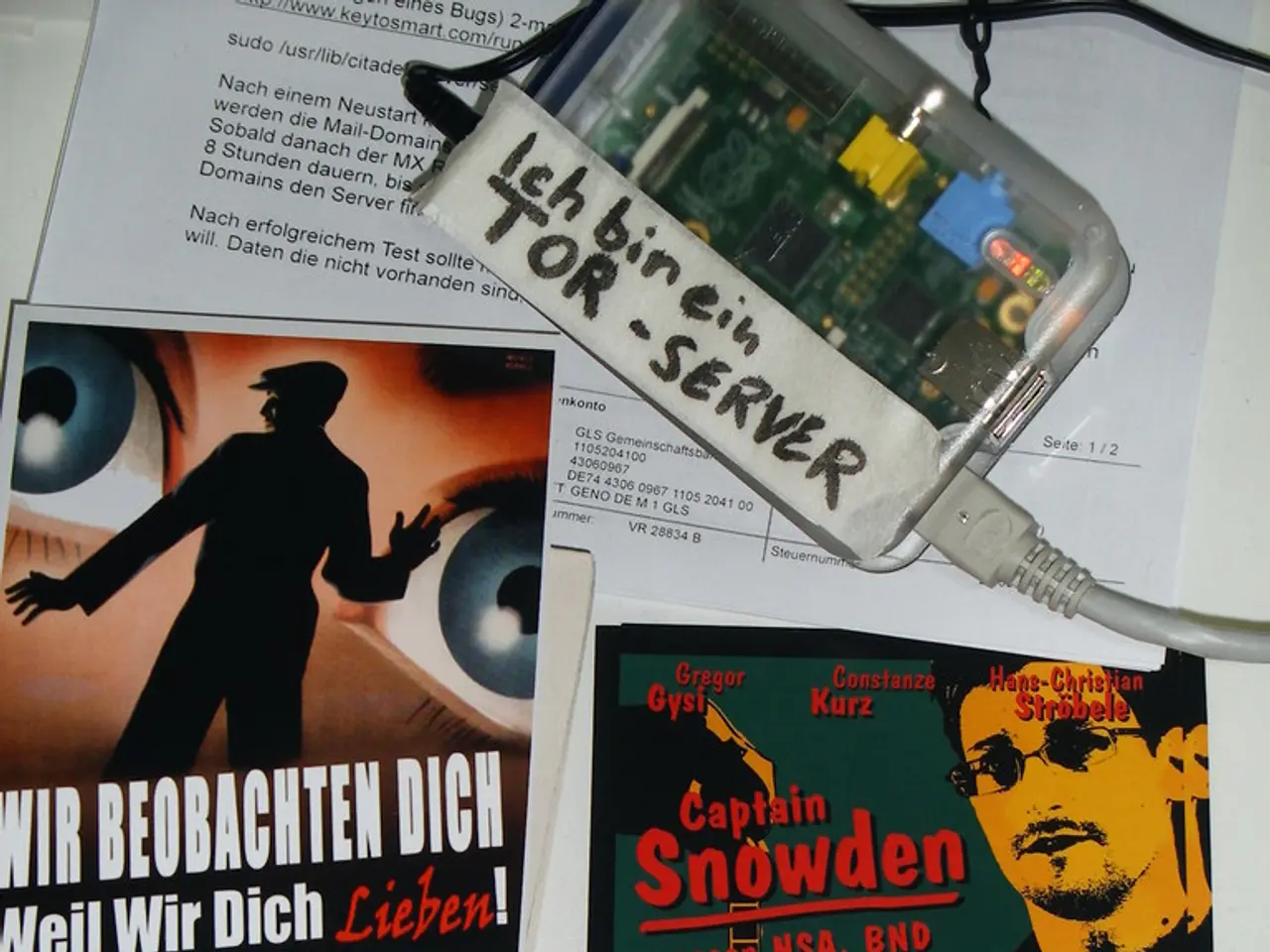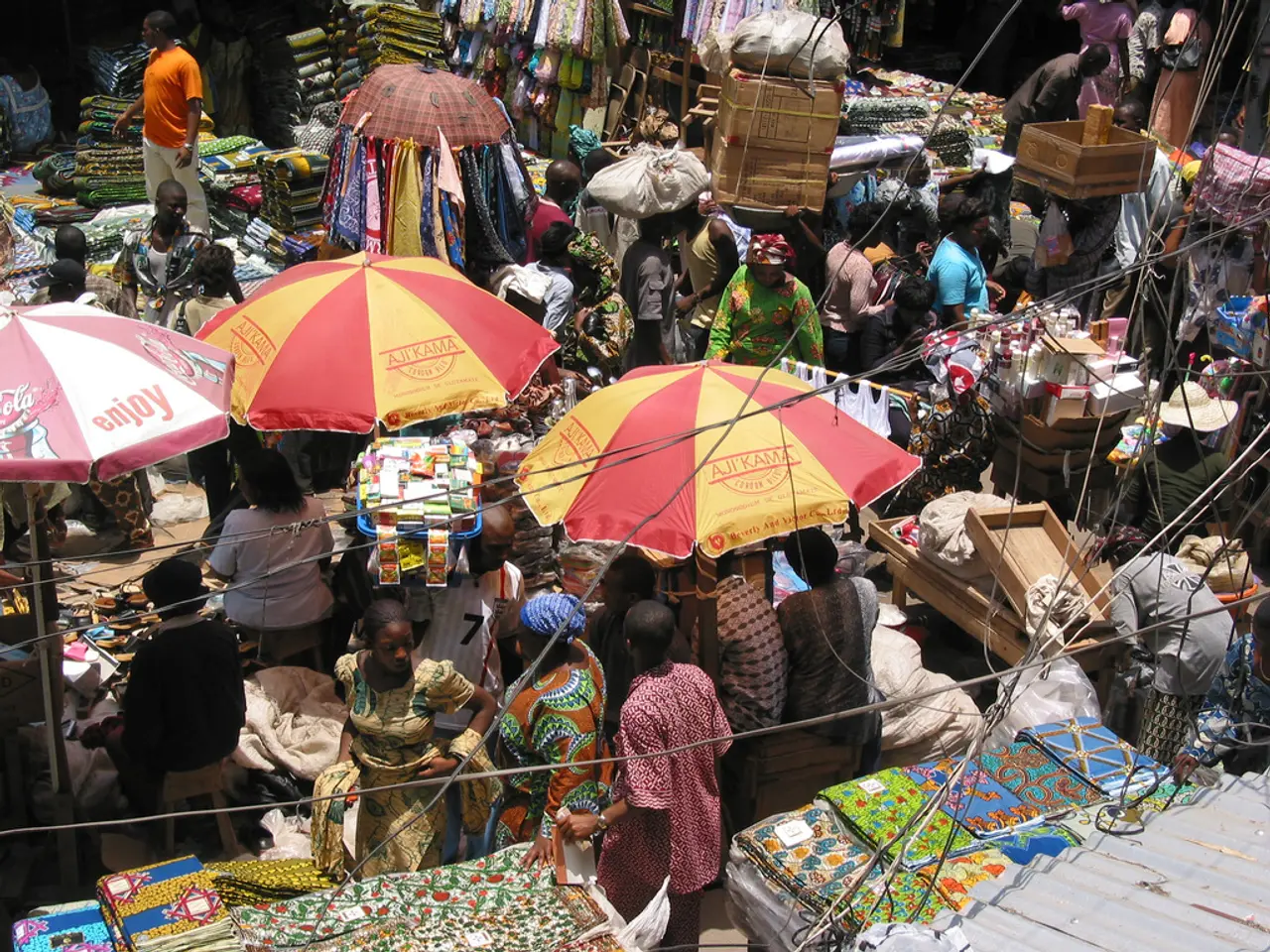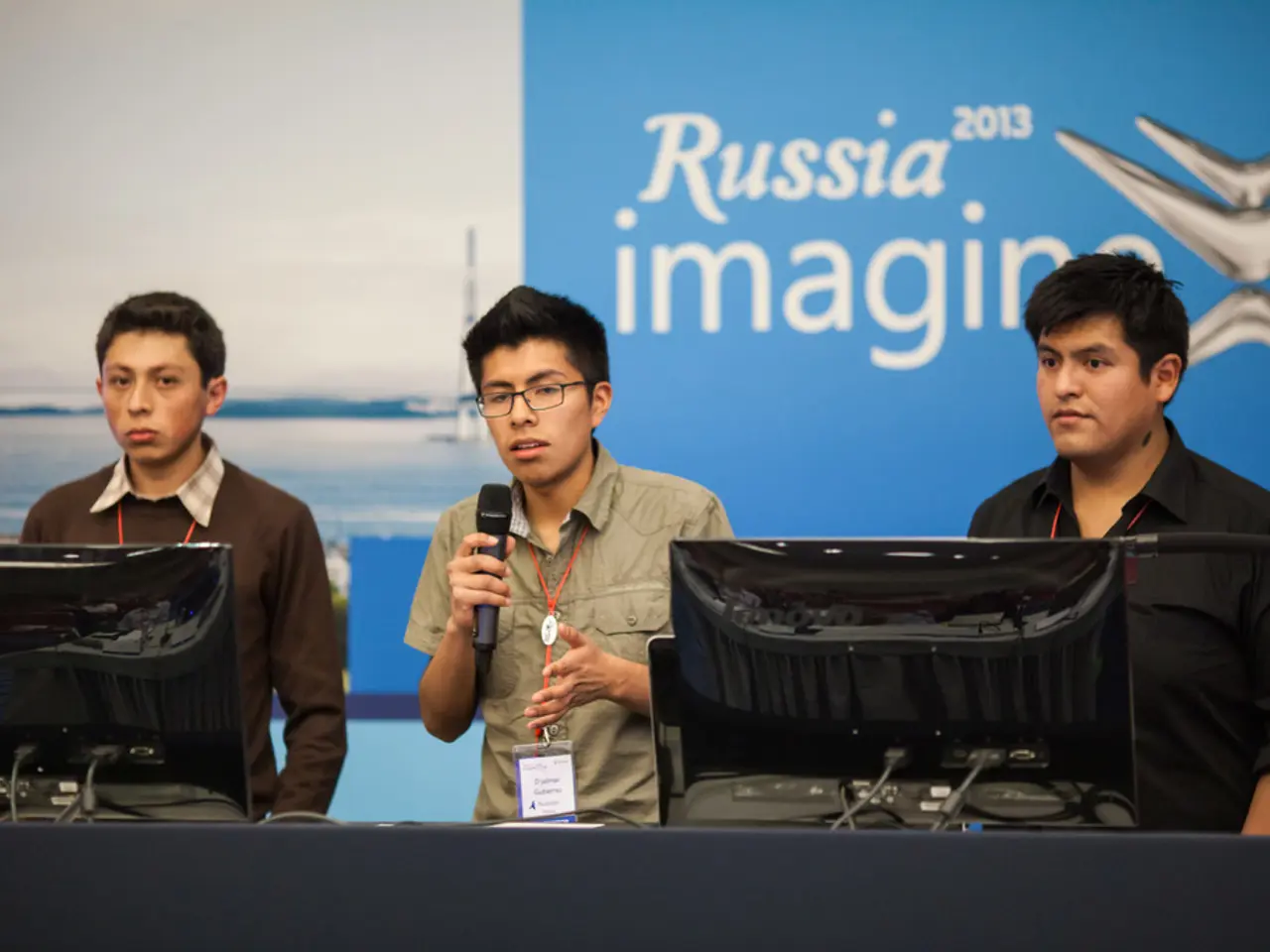China's Innovative Robot Soccer Competition Shows Promising Results!
In a groundbreaking development, China's RoBoLeague, the nation's first humanoid robot football league, has been making waves in the world of technology. Launched in Beijing on June 28, 2025, the league has been serving as a competitive and practical platform to test and improve autonomous robotic systems [1][2][4].
The league's inaugural match, held between robot teams from Tsinghua University and China Agricultural University, saw the former emerge victorious with a score of 5-3 [3]. Every move made by the robots, from chasing the ball to strategizing gameplay and recovering from falls, is powered by artificial intelligence (AI) [1][2][4].
The RoBoLeague marks a significant step forward in the validation of fully autonomous AI technologies. It hosted China’s first-ever fully autonomous 3v3 AI robot football competition, where robots operated independently without human intervention [1][2][4]. This demonstrates the ability of AI to handle real-time decision-making, strategic gameplay, perception, and navigation on the field through advanced visual sensors and AI-driven strategies [1][2][4].
The robots, provided by Booster Robotics, have capabilities equivalent to 5- or 6-year-old children [2]. Despite their progress, they still struggle with object tracking, especially keeping track of a fast-moving soccer ball, and navigating obstacles [1]. However, with each game, they are learning and improving [2].
The RoBoLeague also signifies advancement in humanoid robot mobility and resilience. The robots are designed to stand up after falling, mimicking human-like recovery behaviors, although some still require assistance [2][3]. This reflects progress in locomotion, balance, and robustness in humanoid robotics, critical for real-world applications beyond sports [2][3].
The league is also stimulating algorithm development in AI perception and decision-making. Different university teams developed their own algorithms for player formations, passing, and game strategies, pushing forward the capabilities of AI in complex multi-agent environments [2]. This fosters innovation in AI systems that require coordination, dynamic strategy adjustment, and autonomous control [2].
The RoBoLeague is not just a sports event; it represents a combination of technological innovation and industrial application. It links academic robotics research with practical hardware supplied by companies like Booster Robotics, accelerating the translation of research into deployable technologies [2].
Looking ahead, the RoBoLeague serves as a testbed and preview for the upcoming 2025 World Humanoid Sports Games in Beijing [1][4]. This positions China as a leader in humanoid robot sports and enhances its global robotics competitiveness [1][4].
Beijing is also pouring money and policy support into robotics startups to accelerate the development of robots that walk, think, and act more like humans [5]. The domestic humanoid robot market in China is expected to grow to 870 billion yuan (roughly $120 billion) by 2030 [5].
In May, a martial arts match between two humanoid robots took place in Hangzhou [6]. These developments indicate a broader national push in China to advance humanoid robotics and AI, with potential applications in service, healthcare, and manufacturing [1][2][4].
In conclusion, the RoBoLeague and similar humanoid robot football leagues have become crucial for pushing the boundaries of AI autonomy, robotic agility, teamwork algorithms, and the integration of research with industry in China. These events mark a significant milestone in the country’s robotics and artificial intelligence landscape [1][2][4].
References: [1] Xinhua News Agency. (2025, June 28). China launches first humanoid robot football league. Retrieved from https://www.xinhuanet.com/english/2025-06/28/c_137091830.htm [2] Science Daily. (2025, July 10). RoBoLeague: Advancing humanoid robotics and AI in China. Retrieved from https://www.sciencedaily.com/releases/2025/07/250710120310.htm [3] TechCrunch. (2025, July 15). Tsinghua University's team wins inaugural RoBoLeague match. Retrieved from https://techcrunch.com/2025/07/15/tsinghua-universitys-team-wins-inaugural-roboleague-match/ [4] Forbes. (2025, August 1). RoBoLeague: A stepping stone for humanoid robots in China. Retrieved from https://www.forbes.com/sites/jameskobielus/2025/08/01/roboleague-a-stepping-stone-for-humanoid-robots-in-china/?sh=64870c9c524c [5] Reuters. (2025, August 15). China's domestic humanoid robot market expected to reach $120 billion by 2030. Retrieved from https://www.reuters.com/business/chinas-domestic-humanoid-robot-market-expected-reach-120-billion-2030-2025-08-15/ [6] South China Morning Post. (2025, May 20). First martial arts match between humanoid robots takes place in Hangzhou. Retrieved from https://www.scmp.com/tech/innovation/article/3136170/first-martial-arts-match-between-humanoid-robots-takes-place-hangzhou
- The tech world has been buzzing about the RoBoLeague, China's first humanoid robot football league, which is utilizing artificial intelligence (AI) to power its autonomous robotic systems, showcasing the capabilities of AI in real-time decision-making and strategic gameplay.
- Gizmodo reported that this significant development in China's sports culture also signifies advancements in humanoid robot mobility and resilience, as the robots have been designed to mimic human-like recovery behaviors after falling.
- The RoBoLeague's inaugural match highlighted the league's focus on algorithm development in AI perception and decision-making, with university teams creating their own algorithms for game strategies, reflecting progress in AI systems that require coordination and autonomous control.
- Beyond sports, the RoBoLeague demonstrates the potential application of AI and humanoid robotics in various fields, such as service, healthcare, and manufacturing, as China invests in robotics startups to achieve human-like robots by 2030, projected to be an 870 billion yuan market.




